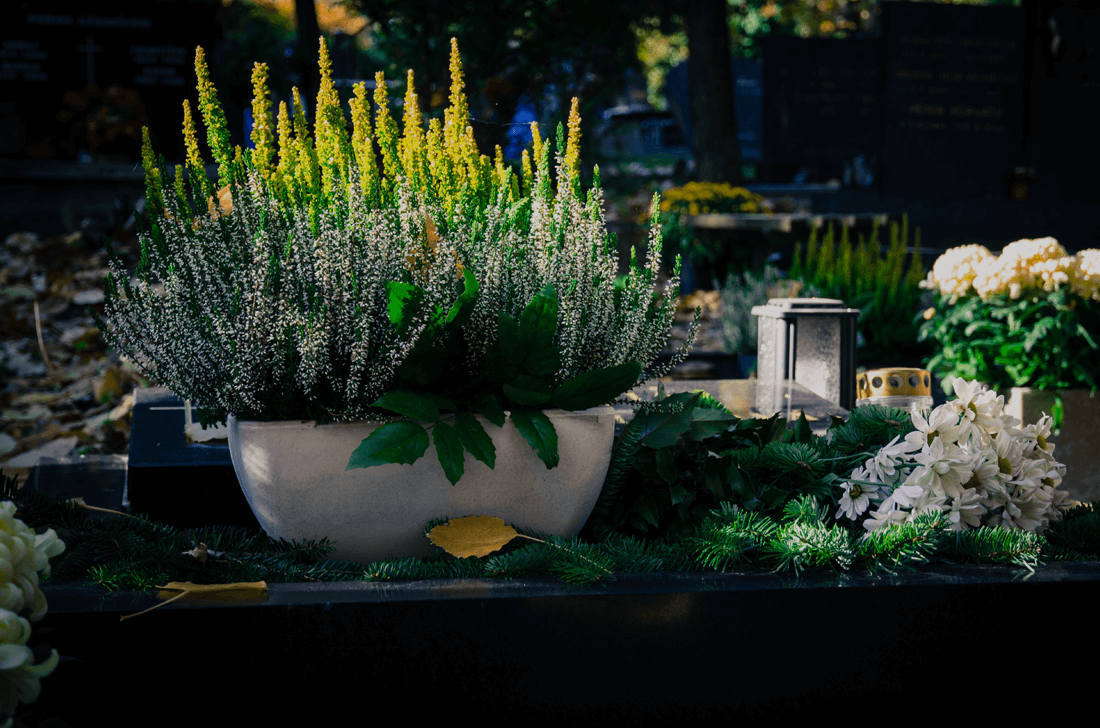
Cemetery culture helps shape our lives and our self-image. As a visible, constantly evolving expression of the German culture of remembrance, cemeteries can be described as history books of our country, our towns and our villages. In their identity-forming power, the achievements of our ancestors are reflected just as much as the history and structures of German society.

Memorial
gardens

Gravestones

Silent
spaces
Over the centuries, a unique tradition has developed in Germany, namely that of designing our graves as small memorial gardens. On the final resting places of our fellow human beings, horticultural elements are combined with stone memorial signs to create a harmonious overall picture that gives visible expression to our need for dignified remembrance. Through individual planting and selected memorial stones, a diversity of gravesites is created which, in the best case, reflect the personality of the deceased. Designing each grave differently also renders it distinctive at the same time. The variety of individual design wishes combines in the cemetery to create a landscape architectural unity that makes each cemetery special. As much as people individually mourn their beloved deceased – the cemetery is always also a place of community, where the roots of German society can be experienced. The gravesites are embedded in an overall social context – in our cemetery culture. The Association for the Culture of Remembrance therefore advocates for both dignified commemoration of the individual and the preservation of cemeteries as central places of burial.
When a loved one departs, he never goes completely: he leaves inner traces in our thoughts and feelings, which we carry on. This explains why in all cultures and at all times memory of ancestors is a pillar of life that creates identity.
The memory is always that of individual, particular people. The central concern of our cemetery culture is to snatch these people – their personality, their life, their work – from oblivion. This can only succeed if we make it clear who is buried where.
Gravestones are therefore more than marker surfaces: they are the stones that keep the name of the deceased alive. In their charisma they are mighty symbols of immortality, solidity and value. They are therefore the central building blocks of our cemetery culture, without which dignified commemoration would be impossible. For this reason, the Association for the Culture of Remembrance also pays special attention to the preservation and continued existence of the stone monument as a central element of our culture of remembrance.
There is no better place to reflect on life than a cemetery! Just as the death of a loved one is always a reminder to live consciously, remembering our ancestors paves the way inwardly for us to ask ourselves profound human questions: Where did I come from? Where am I going?
A visit to a cemetery usually means taking time out from the hectic pace of everyday life, from worries, needs and commitments. In the peace and quiet of this special cultural landscape, thoughts can focus and the mind can wander freely. At the same time, cemeteries are places of silence where one can find peace and balance.
Surely this is the secret of why most people find visiting a gravesite inwardly enriching and not at all a waste of time. Many also sense a “special spirit” in the cemetery that makes this place seem so special.